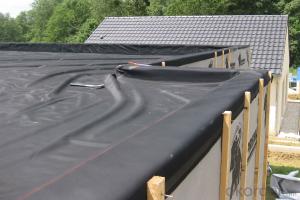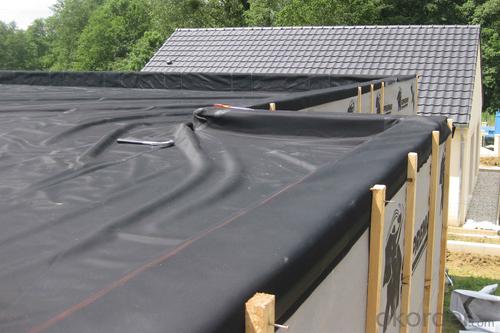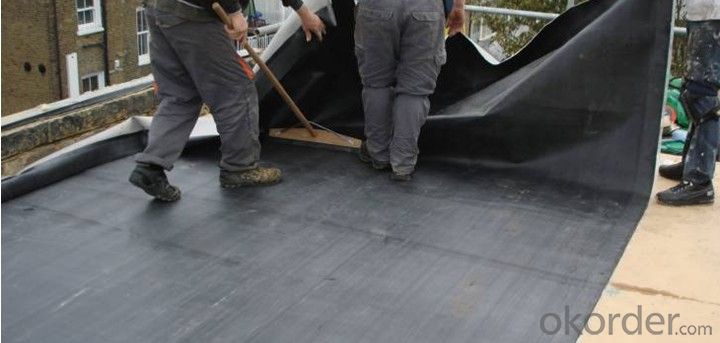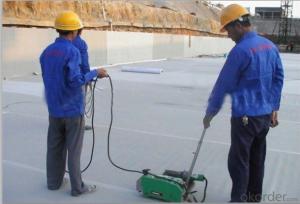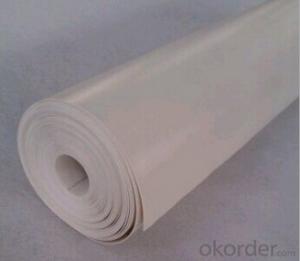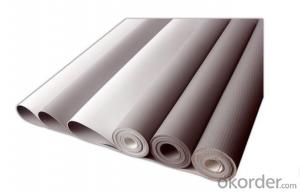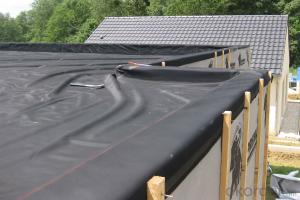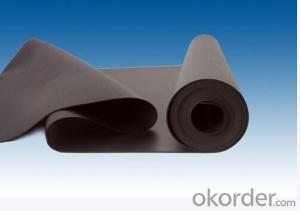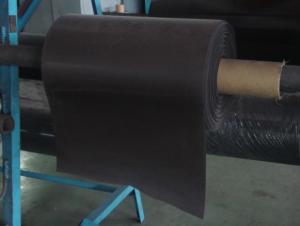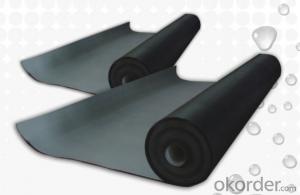EPDM Waterproofing Membrane for Wooden House
- Loading Port:
- Shanghai
- Payment Terms:
- TT OR LC
- Min Order Qty:
- 50000 m²
- Supply Capability:
- 5000000 m²/month
OKorder Service Pledge
OKorder Financial Service
You Might Also Like
EPDM Waterproofing Membrane for Wooden House
Description Of EPDM Waterproofing Membrane for Wooden House:
This waterproof coiled material is of high elasticity with best performance among high polymer waterproof coiled material in the world.It is also the most typical one in the world.Waterproof coiled material made of ternary ethylenepropylene rubber of KINTOPbrand is produced with the use of the most advanced continuous extrusion and vulcanization technology and related equipments which are specially designed for production of such product.It is good in compactness,without bubble and performance difference in length and breadth.
Main Features of EPDM Waterproofing Membrane for Wooden House:
1>Excellent anti-aging performance, service life up to 50 years
2>Working well with in -40°C to 100°C,it can be constructed with a single layer in ambient temperature.
3>Waterproofing on various kinds of underground project,industrial of civil buildings and structures.
4>high extension rate, high tensile strength, small size changes at heat treatment
5>Good plant roots penetrability resistance and can be made waterproofing layer of planting roof
6>Special modified molecular structure ,effectively resolving the current domestic and foreign glue
joint problem .
7>Good low temperature flexibility, and good performance of adapting to ambient temperature
changes.
8>Convenient application ,solid joint, no environment pollution
9>chemical corrosion Resistance, can be used for special occasions
Specifications of EPDM Waterproofing Membrane for Wooden House:
Type | EPDM Rubber Waterproof Membrane | ||
Type | Vulcanized and Weldable | ||
Thickness | 1.2mm | 1.5mm | 2.0mm |
Weight(kg/m2) | 1.54-1.58 | 1.79-1.83 | 2.25-2.29 |
Size | 1.2m (width) * 20m (length)/roll. Weldable type could be 4m wide. | ||
Packing | 24㎡/roll, with plastic bag. (Weldable: 80㎡/roll) | ||
Usage | Roof, basement, pond, Lake, steel structure roofing, underground, tunnel, etc | ||
NO. | Item | Unit | Technical requirement | |
1 | Tolerance on size | Thickness | % | ±10 |
Width | % | ±1 | ||
length | % | Does not allow negative | ||
2 | Fracture tensile strength (normal temperature ) | Mpa | ≥7.5 | |
Fracture tensile strength(60 ℃) | Mpa | ≥2.3 | ||
3 | Breaking elongation,(normal temperature ) | % | ≥450 | |
Breaking elongation,(-20 ℃) | % | ≥200 | ||
4 | Tearing resistance | KN/m | ≥25 | |
5 | Impermeability | * | 0.3Mpa impermeable | |
6 | Bending at low temperature | °C | ≤-40 | |
7 | Elongation and contraction volume at heating | Elongation | mm | ≤2 |
contraction | mm | ≤4 | ||
8 | Hot air aging 80°CX168h | Fracture strength retention | % | ≥80 |
Rate of elongation at break | % | ≥70 | ||
9 | Alkaline (saturated Ca(OH)2 solution normal Temperature x2 168h ) | Fracture strength retention | % | ≥80 |
Rate of elongation at break | % | ≥80 | ||
10 | Ozone aging (40 degree by 168 hours ) | Elongation 40% , 500x10-2 | * | No Crack |
11 | Phytotron aging | Fracture strength retention | % | ≥80 |
Rate of elongation at break | % | ≥70 | ||
Applications of EPDM Waterproofing Membrane for Wooden House:
Widely used in roofs, basement, toilet ,swimming pool, and all kinds of industry and civil building waterproofing, reservoir, vivicism, bridge, underground, tunnel and dam waterproofing ,especially to the keystone waterproofing projects which is durability, high corrosion resistance and easy deformation.
Construction Site of EPDM Waterproofing Membrane for Wooden House:
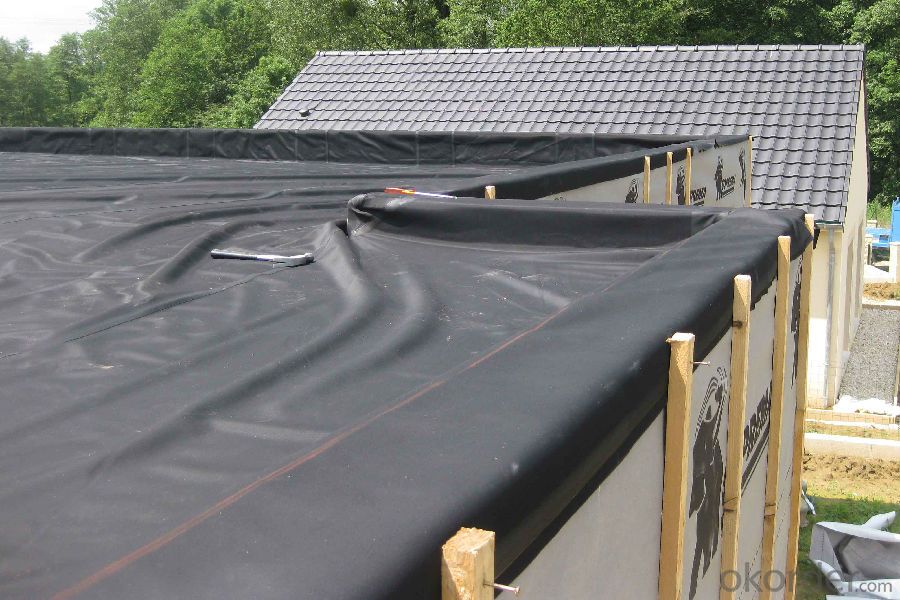


IMages of EPDM Waterproofing Membrane for Wooden House:
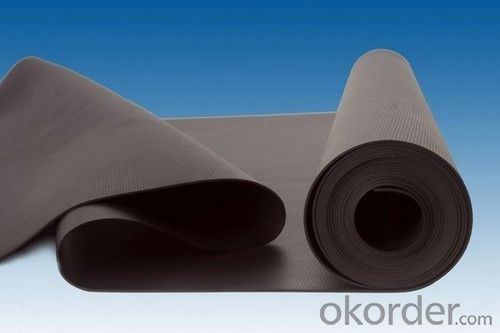



FAQ of EPDM Waterproofing Membrane for Wooden House:
1. What are we supplying?
We are specialized in producing Colorful Asphalt Roof Shingle, SBS/APP modified bitumen waterproof membrane, Self adhesive bitumen waterproof membrane, PVC waterproofing membrane, EPDM rubber roofing membrane, Single Component Polyurethane Waterproof Coating, and Spray Polyurea Waterproof Coating
.
2. How Many years experience do we have?
We have been exported to more than 20 countries in the past 15 years.
3. How long do we usually reply your request?
We always reply our customer within 24 hours.
- Q: The shortcomings of polypropylene waterproofing, and the shortcomings of modified asphalt waterproofing membrane
- but the current domestic Still less match with the binder, because the environment and bonding materials and other factors often lose their bond function in advance, resulting in water failure will be self-evident; then waterproofing membrane after the construction of the protection And the leak after the maintenance is also a problem, exposed to the outside of the waterproof layer of foreign mechanical damage prevention is very important, waterproof membrane and grass-roots bonding, whether it is full shop, shop, shop, empty shop, The grassroots will be between the water layer, regardless of any part of the penetrating breakage, degumming, leakage of glue (even if there is only one), the entire level of its connection with the waterproof function will all decline, if not Find damaged and defective parts, the local repair is not possible, then only redo waterproof layer. So it is better to waterproof polypropylene
- Q: Can a waterproofing membrane be used for a swimming pool deck?
- Yes, a waterproofing membrane can be used for a swimming pool deck. Waterproofing membranes are commonly used in construction and are designed to prevent water penetration. They are typically applied to surfaces such as concrete or wood to ensure that water does not seep through and cause damage. For a swimming pool deck, where exposure to water is constant, using a waterproofing membrane can help protect the underlying structure and prevent issues such as water damage, rotting, or mold growth. Additionally, a waterproofing membrane can also provide a slip-resistant surface, enhancing safety for pool users.
- Q: Can waterproofing membranes be used on parking decks?
- Indeed, parking decks can benefit from the application of waterproofing membranes. Given their exposure to diverse weather conditions and constant vehicular movement, water infiltration and subsequent damage are potential concerns. To combat this, waterproofing membranes act as a safeguard, effectively blocking water from seeping into the structure and causing deterioration. These membranes are engineered to withstand significant loads and resist the harmful effects of automotive fluids, making them an optimal choice for parking decks. By implementing waterproofing membranes, the lifespan of the parking deck can be prolonged, minimizing the necessity for expensive repairs and guaranteeing the safety and integrity of the structure.
- Q: Can a waterproofing membrane be used in steam rooms?
- Yes, a waterproofing membrane can be used in steam rooms. A waterproofing membrane is designed to prevent water infiltration and is commonly used in areas where moisture is present, such as bathrooms, showers, and steam rooms. The membrane acts as a barrier, preventing water vapor from penetrating the underlying structure and causing damage. In steam rooms, where high levels of humidity and moisture are present, using a waterproofing membrane is essential to protect the walls, floors, and other surfaces from water damage and mold growth. It is important to choose a waterproofing membrane that is specifically designed for high moisture environments like steam rooms to ensure proper protection and longevity. Additionally, proper installation and adherence to manufacturer guidelines are crucial for the effectiveness and durability of the waterproofing membrane in a steam room setting.
- Q: Can a waterproofing membrane be used for planters or raised beds?
- Yes, a waterproofing membrane can be used for planters or raised beds. It can help to prevent water leakage and protect the surrounding area from water damage. By installing a waterproofing membrane in planters or raised beds, you can ensure that excess water is properly contained and drained, allowing for healthier plants and a more controlled growing environment. Additionally, a waterproofing membrane can also help to extend the lifespan of the planter or raised bed by protecting it from moisture-related deterioration. However, it is important to ensure proper drainage is in place to prevent waterlogging and root rot.
- Q: Can a waterproofing membrane be used in combination with insulation materials?
- Indeed, the utilization of a waterproofing membrane alongside insulation materials is highly recommended. This combination offers heightened defense against water damage and moisture infiltration. The waterproofing membrane functions as a protective barrier, preventing water from infiltrating the building envelope, while the insulation materials regulate temperature and enhance energy efficiency. Merging these two components results in a sturdier and more efficient building envelope system. However, it is crucial to verify the compatibility of the selected waterproofing membrane with the insulation materials and adhere to proper installation techniques to guarantee a secure seal and optimal performance.
- Q: Can a waterproofing membrane be used for podium decks or plaza areas?
- Podium decks or plaza areas can benefit from the application of a waterproofing membrane. It is highly recommended to utilize this protective layer in order to safeguard the underlying structure from water-related harm. Given their exposure to the elements, podium decks and plaza areas are susceptible to water infiltration. By implementing a waterproofing membrane, water seepage into the lower layers can be effectively prevented, thus ensuring the long-lasting durability and structural integrity of the deck or plaza. Furthermore, this waterproofing membrane is also capable of shielding spaces beneath the deck or plaza, such as basements or parking garages, from potential water damage. Therefore, it is crucial to select a top-notch waterproofing membrane specifically designed for outdoor purposes, and to carefully adhere to the manufacturer's instructions regarding proper installation and maintenance.
- Q: Can a waterproofing membrane be exposed to extreme temperatures?
- Yes, a waterproofing membrane can be exposed to extreme temperatures. Waterproofing membranes are designed to withstand a wide range of temperatures, including extreme cold and heat, without being damaged or compromised. They are specifically manufactured to provide effective waterproofing and protection in various environmental conditions.
- Q: Basement SBS Waterproof Coil Division I and II type What is the difference? How is the site identified?
- SBS type I and type II differences are mainly low temperature flexibility and tensile extension
- Q: What are the advantages and disadvantages of waterproofing membrane?
- The waterproof membrane study its drawbacks: waterproofing is performed when the amount of coating material according to the cross-sectional shape of the waterproof base waterproof construction, the need for a complex shape of the base layer a plurality of splicing, waterproofing overlap each other at the bonding difficult than Large, due to the impact of multi-block splicing waterproof layer of beauty; then completely absolute seal will become the main problem, the biggest hidden dangers, the most opportunities is the coiled parts of the coil; then high-grade waterproofing membrane with a few decades durable for a long time, but the country is still less matched the binder, and the binder material itself due to environmental factors such as loss of adhesion is often ahead of function, thus leading to the failure of the waterproof self-evident; Furthermore Waterproof membrane after the construction of the protection and leakage after the maintenance is also a problem, exposed waterproof layer of foreign mechanical damage prevention is very important, waterproof membrane and the grass-roots bonding, whether full of shops, shop, shop air, between the base layer and the web would be to go aqueous layer, regardless of any part of the cross-cutting breakage, degumming, drooling (even the only one), the entire coherent thereto waterproof power level Will lose all bad, if you can not find damaged and defective parts, the local repair is not possible, then only redo waterproof layer.
Send your message to us
EPDM Waterproofing Membrane for Wooden House
- Loading Port:
- Shanghai
- Payment Terms:
- TT OR LC
- Min Order Qty:
- 50000 m²
- Supply Capability:
- 5000000 m²/month
OKorder Service Pledge
OKorder Financial Service
Similar products
Hot products
Hot Searches
Related keywords
